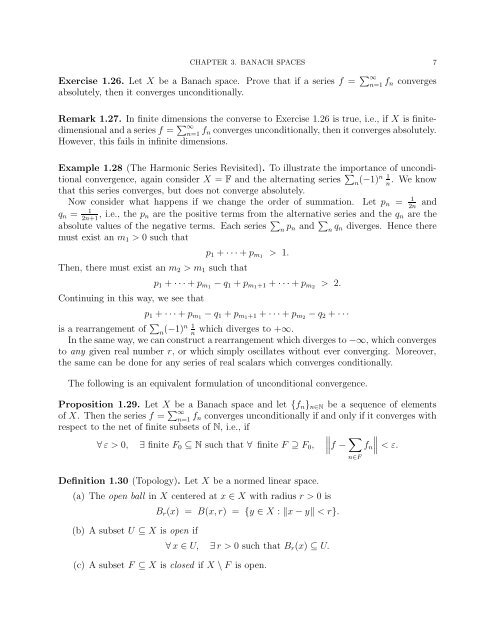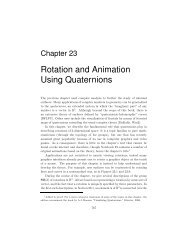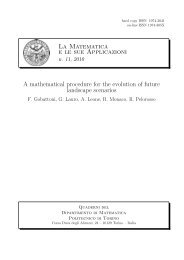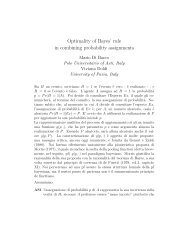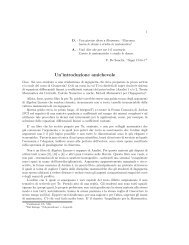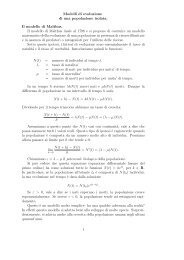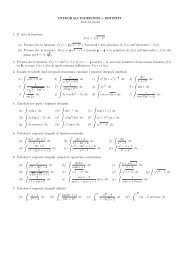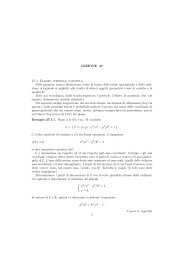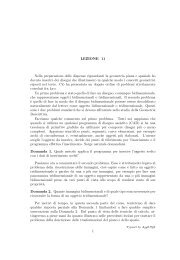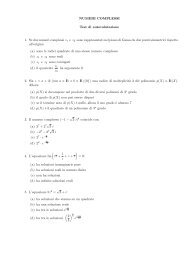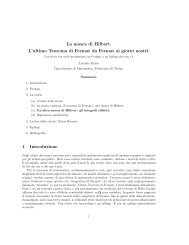FUNCTIONAL ANALYSIS LECTURE NOTES CHAPTER 3. BANACH ...
FUNCTIONAL ANALYSIS LECTURE NOTES CHAPTER 3. BANACH ...
FUNCTIONAL ANALYSIS LECTURE NOTES CHAPTER 3. BANACH ...
You also want an ePaper? Increase the reach of your titles
YUMPU automatically turns print PDFs into web optimized ePapers that Google loves.
<strong>CHAPTER</strong> <strong>3.</strong> <strong>BANACH</strong> SPACES 7<br />
Exercise 1.26. Let X be a Banach space. Prove that if a series f = ∞<br />
n=1 fn converges<br />
absolutely, then it converges unconditionally.<br />
Remark 1.27. In finite dimensions the converse to Exercise 1.26 is true, i.e., if X is finitedimensional<br />
and a series f = ∞ n=1 fn converges unconditionally, then it converges absolutely.<br />
However, this fails in infinite dimensions.<br />
Example 1.28 (The Harmonic Series Revisited). To illustrate the importance of unconditional<br />
convergence, again consider X = F and the alternating series 1<br />
n (−1)n . We know<br />
n<br />
that this series converges, but does not converge absolutely.<br />
Now consider what happens if we change the order of summation. Let pn = 1<br />
2n and<br />
qn = 1<br />
2n+1 , i.e., the pn are the positive terms from the alternative series and the qn are the<br />
absolute values of the negative terms. Each series <br />
n qn diverges. Hence there<br />
must exist an m1 > 0 such that<br />
p1 + · · · + pm1 > 1.<br />
Then, there must exist an m2 > m1 such that<br />
Continuing in this way, we see that<br />
n pn and <br />
p1 + · · · + pm1 − q1 + pm1+1 + · · · + pm2 > 2.<br />
p1 + · · · + pm1 − q1 + pm1+1 + · · · + pm2 − q2 + · · ·<br />
is a rearrangement of 1<br />
n (−1)n which diverges to +∞.<br />
n<br />
In the same way, we can construct a rearrangement which diverges to −∞, which converges<br />
to any given real number r, or which simply oscillates without ever converging. Moreover,<br />
the same can be done for any series of real scalars which converges conditionally.<br />
The following is an equivalent formulation of unconditional convergence.<br />
Proposition 1.29. Let X be a Banach space and let {fn}n∈N be a sequence of elements<br />
of X. Then the series f = ∞ n=1 fn converges unconditionally if and only if it converges with<br />
respect to the net of finite subsets of N, i.e., if<br />
<br />
<br />
∀ ε > 0, ∃ finite F0 ⊆ N such that ∀ finite F ⊇ F0, f − <br />
<br />
< ε.<br />
Definition 1.30 (Topology). Let X be a normed linear space.<br />
(a) The open ball in X centered at x ∈ X with radius r > 0 is<br />
(b) A subset U ⊆ X is open if<br />
Br(x) = B(x, r) = {y ∈ X : x − y < r}.<br />
∀ x ∈ U, ∃ r > 0 such that Br(x) ⊆ U.<br />
(c) A subset F ⊆ X is closed if X \ F is open.<br />
n∈F<br />
fn


